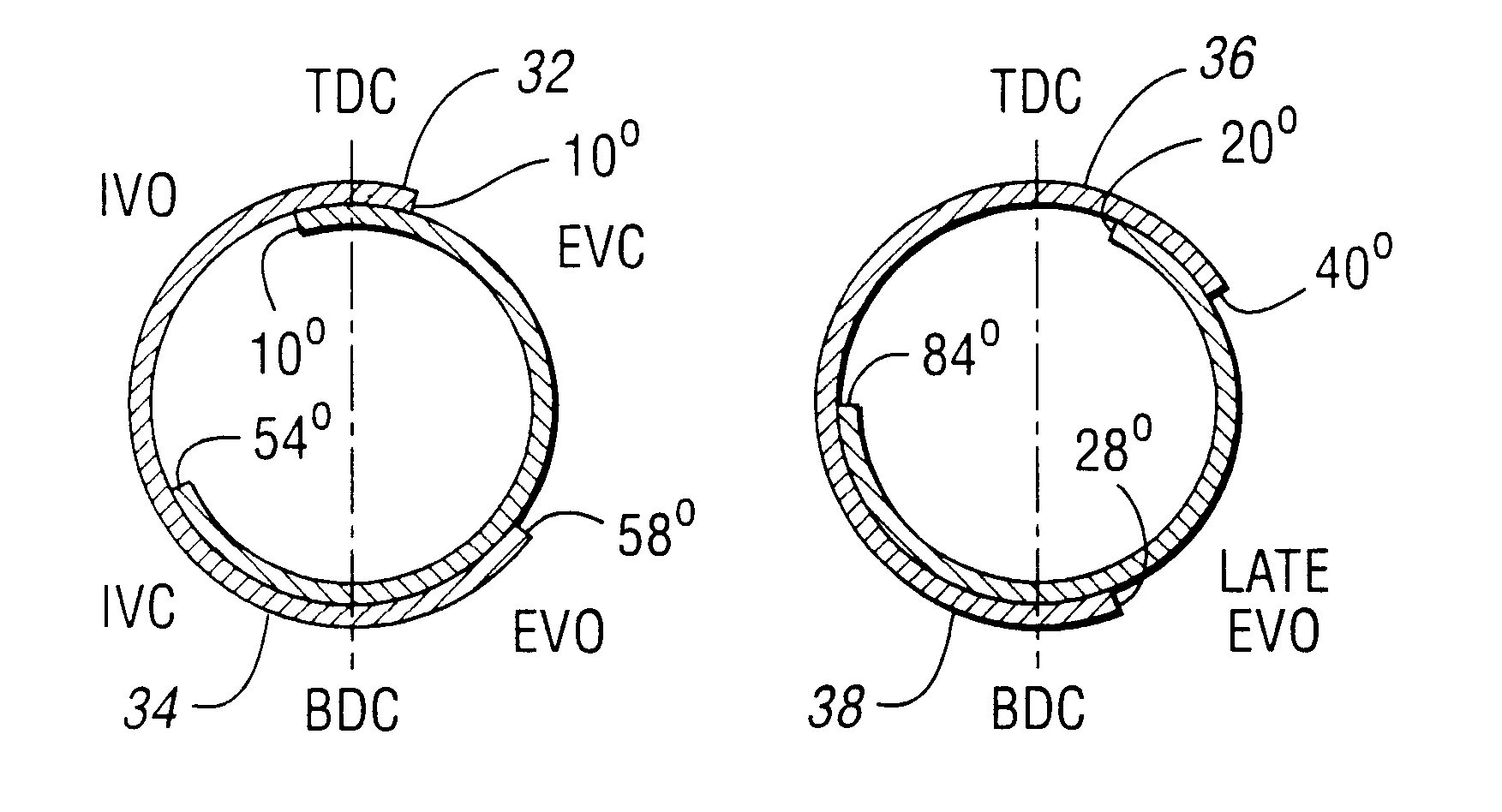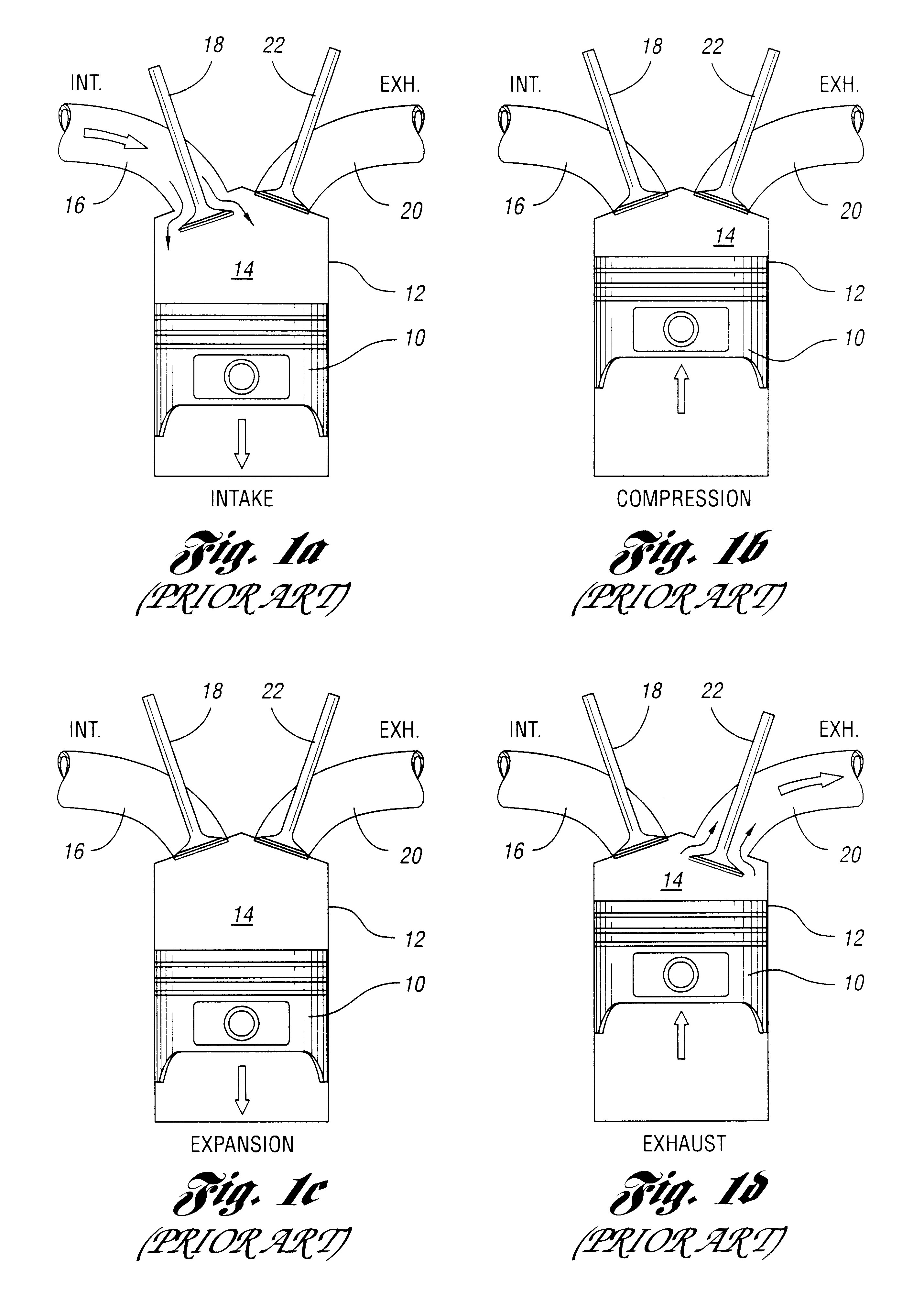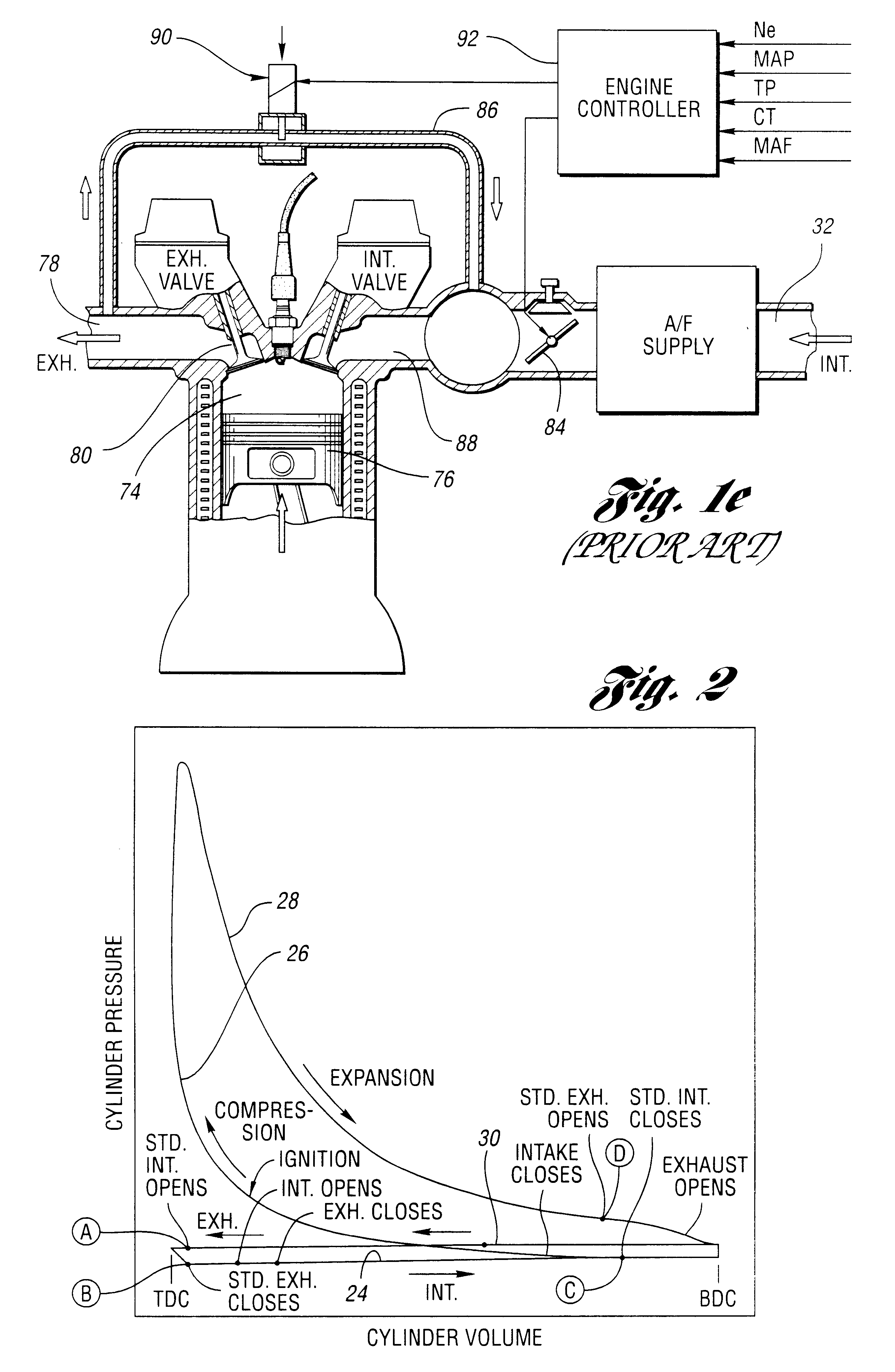Engine control strategy using dual equal cam phasing combined with exhaust gas recirculation
- Summary
- Abstract
- Description
- Claims
- Application Information
AI Technical Summary
Benefits of technology
Problems solved by technology
Method used
Image
Examples
Embodiment Construction
FIGS. 1a, 1b, 1c, 1d and 1e show schematically a conventional four stroke cycle engine having one or more cylinders. One of the engine cylinders is illustrated in FIG. 1a in the intake mode, in FIG. 1b in the compression mode, in FIG. 1c in the expansion mode, and in FIG.1d in the exhaust mode. In FIGS. 1a-1d, piston 10 and cylinder 12 define a combustion chamber 14. The piston 10, which is connected to a crankshaft in known manner, moves downward in the cylinder 12 during the intake stroke, as shown by the directional arrow in FIG. 1a. During the intake stroke, air or an air / fuel mixture is drawn into the combustion chamber from intake passage 16. The flow is controlled by intake valve 18. An exhaust port 20 communicates with the combustion chamber 14 through an exhaust valve 22.
During the compression stroke, which is indicated in FIG. 1b, the piston moves upward, thereby compressing the charge in combustion chamber 14. At that time, the intake valve 18 and the exhaust valve 22 are...
PUM
 Login to View More
Login to View More Abstract
Description
Claims
Application Information
 Login to View More
Login to View More - R&D
- Intellectual Property
- Life Sciences
- Materials
- Tech Scout
- Unparalleled Data Quality
- Higher Quality Content
- 60% Fewer Hallucinations
Browse by: Latest US Patents, China's latest patents, Technical Efficacy Thesaurus, Application Domain, Technology Topic, Popular Technical Reports.
© 2025 PatSnap. All rights reserved.Legal|Privacy policy|Modern Slavery Act Transparency Statement|Sitemap|About US| Contact US: help@patsnap.com



